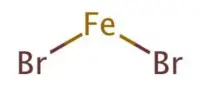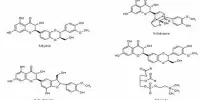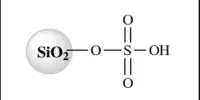Barium bromide is a chemical compound with the formula BaBr2. It is ionic and hygroscopic in nature. It is a salt composed of barium (Ba) cations and bromide (Br-) anions. Barium bromide can exist in anhydrous (without water) and hydrated forms. It is a white crystalline solid at room temperature. The dihydrate form is the more common crystalline structure. It is soluble in water, and the solubility increases with temperature.
Properties
- Chemical formula: BaBr2 (anhydrous); BaBr2·2H2O (dihydrate)
- Molar mass: 297.14 g/mol
- Appearance: White solid
- Density: 4.78 g/cm3 (anhydrous); 3.58 g/cm3 (dihydrate)
- Melting point: 857 °C (1,575 °F; 1,130 K)
- Boiling point: 1,835 °C (3,335 °F; 2,108 K)
- Solubility in water: 92.2 g/100 mL (0°C)
Preparation
Barium bromide can be prepared by treating barium sulfide or barium carbonate with hydrobromic acid:
BaS + 2 HBr → BaBr2 + H2S
BaCO3 + 2 HBr → BaBr2 + CO2 + H2O
Barium bromide crystallizes from concentrated aqueous solution in its dihydrate , BaBr2·2H2O. Heating this dihydrate to 120 °C gives the anhydrous salt.
Uses
Barium bromide is a precursor to chemicals used in photography as well as other bromides. It has a limited application in some chemical processes and research applications. It is not as widely used as other barium compounds.
Historically, barium bromide was used to purify radium in a fractional crystallization process devised by Marie Curie. Because radium preferentially precipitates in a solution of barium bromide, the ratio of radium to barium in the precipitate would be greater than the ratio in the solution.
Safety
Barium bromide, like other water-soluble barium salts (such as barium chloride), is toxic. However, there is no conclusive data on its risks. Because of the toxicity of barium ions, it, like other barium compounds, should be handled with caution.
















